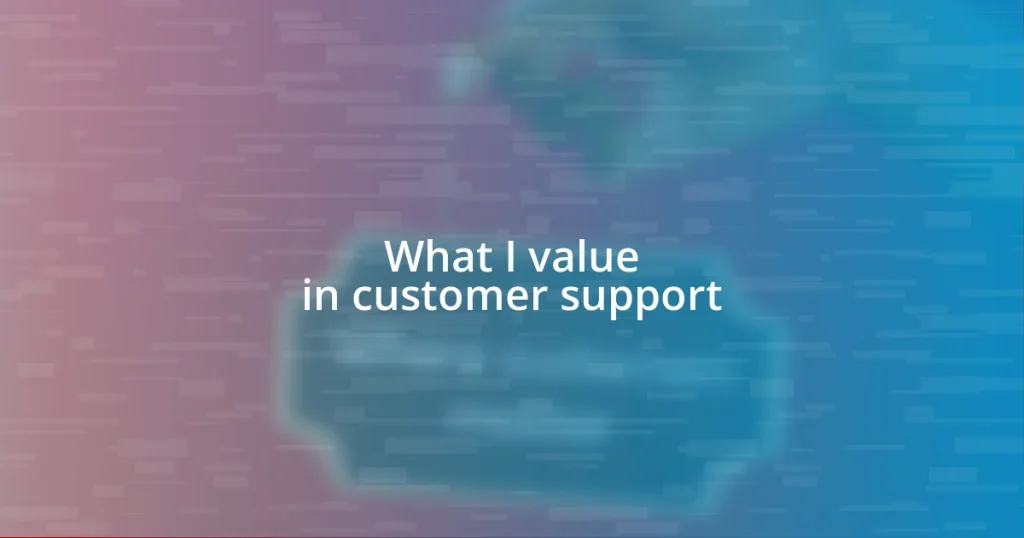Key takeaways:
- Define specific, measurable SEO goals aligned with overall business strategy to provide clarity and direction.
- Streamline your workflow by auditing current practices, consolidating tools, and automating repetitive tasks for better efficiency.
- Continuously analyze results and adjust strategies based on data-driven insights to foster growth and adapt to changes in the SEO landscape.

Define your SEO goals
Defining your SEO goals is like setting the compass for a journey. When I began my SEO adventure, I remember feeling overwhelmed by the vastness of options. Should I focus on increasing organic traffic, boosting conversions, or perhaps enhancing brand awareness? It became clear that pinpointing specific objectives would help me avoid getting lost in the noise.
One of the game-changing moments for me was realizing that my goals needed to be measurable. I used to have vague ambitions like “I want more readers.” But when I shifted to something like “I want to increase organic traffic by 30% in six months,” it felt more tangible and motivating. This clarity drove my actions and made it easier to track my progress. What goals are you ready to set that can energize your SEO efforts?
It’s essential to align your goals with your overall business strategy. For example, if increasing sales is a priority, focusing on SEO strategies that attract high-intent keywords can be a smart move. Reflecting on my own experience, I found that when my SEO objectives matched my business vision, every effort felt more purposeful. How can defining your goals clarify your path on this SEO journey?

Audit your current workflow
Auditing your current workflow is a crucial step in enhancing your SEO efforts. I remember the first time I took a hard look at how I was managing my tasks. It felt a bit like cleaning out a messy garage—overwhelming at first! I began by listing out all my activities, from keyword research to content creation and link building. This visual overview allowed me to see redundancies and areas where I was spending too much time on low-impact activities. Have you taken the time to examine where your energy is really going?
As I delved deeper, I was surprised to discover that I was using multiple tools to achieve similar results. For instance, I had separate applications for tracking rankings, analyzing competitors, and auditing content. Streamlining those processes into fewer, more integrated tools not only saved me time but also helped me stay focused. If you haven’t already, consider how many tools you rely on. Can consolidating your resources streamline your workflow just as it did mine?
To make this audit more effective, I recommend assigning a time frame for each task and tracking your efficiency. Analyze where you lose the most time and investigate why. This self-awareness can be a game changer. Reflecting on my own struggles, I once found that I spent far too long on social media engagement and tracking. Realizing this, I adjusted my approach, freeing up time for more impactful activities. What insights will you uncover about your current practices?
| Workflow Component | Time Spent Before | Time Spent After |
|---|---|---|
| Keyword Research | 5 hours/week | 2 hours/week |
| Content Creation | 10 hours/week | 8 hours/week |
| Link Building | 6 hours/week | 4 hours/week |

Identify key SEO tools
Identifying key SEO tools is essential for optimizing your workflow and achieving your goals. I vividly recall my earlier days in SEO when I stumbled through a maze of tools—each promising to be the solution to my problems. It took quite a bit of trial and error, but I eventually found a few that genuinely transformed the way I worked. The right tools can streamline processes that once felt burdensome, allowing you to focus on what truly matters: crafting great content and connecting with your audience.
Here are some tools that I’ve found invaluable in my SEO journey:
- Google Analytics: Essential for tracking website performance and user behavior.
- Ahrefs: A powerful all-in-one tool for keyword research, backlinks, and site audits.
- SEMrush: Excellent for competitor analysis, tracking keyword rankings, and SEO audit capabilities.
- Yoast SEO: A must-have for optimizing content directly on WordPress, ensuring best practices are followed.
- Moz Pro: Great for tracking domain authority and keyword rankings, along with robust resources for beginners.
The tools I settled on didn’t just provide data; they offered insights that truly guided my strategy. When I embraced these key SEO tools, it felt like flipping a switch. Tasks that once took hours could now be completed in a fraction of the time. I encourage you to explore different options—your perfect fit is out there, ready to transform your SEO game.

Automate repetitive tasks
Automating repetitive tasks has been a revelation in my SEO workflow. For instance, I used to spend countless hours gathering data from different sources for reporting. Once I integrated tools like Google Data Studio, I was able to automate these reports. Now, I hardly blink an eye at the process—it simply runs on autopilot, giving me precious time to actually analyze the insights instead of just compiling them.
Another area where automation shines is email outreach. I remember how painstaking it felt to draft individual messages to countless potential link partners. By utilizing tools like Mailshake, I could set up personalized outreach campaigns and follow-up sequences. The results were incredible! Not only did my response rate improve, but the time saved allowed me to focus on crafting deeper relationships with those who responded. Have you considered how easing such burdens could affect your effectiveness?
Sometimes I wonder why I didn’t automate these tasks sooner. The mental load of just thinking about them was daunting. Now, tasks like social media scheduling or keyword tracking happen without any manual intervention. It’s almost like a weight has been lifted off my shoulders. Can you picture how much more you could accomplish if you let automation handle the mundane? I urge you to explore the possibilities in your own workflow.

Implement a content calendar
Implementing a content calendar has been a game changer for my SEO workflow. I remember the chaotic days of chasing deadlines and scrambling to remember what needed to be published next. By organizing my content schedule in advance, I not only eased the stress of last-minute scrambles, but I also found a rhythm that allowed my creativity to flow. Does planning content ahead sound daunting? Trust me, it can be incredibly liberating!
What truly amazed me was how a simple tool transformed my entire approach. I settled on using Google Sheets for my content calendar because it was flexible and accessible. Each month, I’d plot out my topics, assign deadlines, and include notes on target keywords. This structure gave me a clear roadmap, enabling me to align my content with key SEO strategies effortlessly. Have you ever felt the clarity that comes with a well-organized plan? It puts you in control!
Most importantly, I’ve discovered that my audience benefits from this organization too. By consistently scheduling content, I was able to focus on topics that resonate with my audience, resulting in increased engagement. I recall a time when a well-timed article led to a surge in traffic that I hadn’t anticipated. It was exhilarating! With a content calendar, I can see patterns and themes emerging, which drives my strategy forward. Isn’t it exciting to think about how a little planning could elevate your own content game?

Measure and analyze results
When it comes to measuring and analyzing results, I’ve found it to be an eye-opening part of my SEO workflow. Initially, I would check metrics like site traffic after every campaign, but it felt scattered and unstructured. Now, I rely on tools like Google Analytics to compile comprehensive reports weekly. The best part? I’ve noticed that tracking metrics over time reveals trends I never saw during sporadic checks. Have you ever experienced that “aha” moment when data tells a story?
Digging into the numbers isn’t just about the figures; it’s about understanding what resonates with my audience. I remember the thrill I got when I discovered that a specific blog post format increased engagement by 50%. I felt like a detective cracking a case! This type of discovery shapes my content strategy, allowing me to focus on what my readers really want. Can you imagine how much more impactful your work could be if you used data to steer your decisions?
Reflecting on results also opens the door for adjustments. There’s nothing more frustrating than pouring your heart into a project only to see it flop. This happened to me with an SEO strategy I had high hopes for; initially, I felt disheartened. However, after analyzing the data, I realized where I missed the mark and adjusted my approach accordingly. That sense of resilience is empowering—each setback becomes a stepping stone for growth. How do you use your results to innovate?

Adjust and optimize your strategy
Experimenting with your SEO strategy is essential for long-term success. I’ve often found myself trapped in the rut of doing things simply because they’ve always worked in the past. But I remember a time when I decided to pivot a blog series based on emerging trends and adjusted my keywords accordingly. The result? A remarkable boost in organic traffic. It’s all about being willing to reevaluate and embrace change. Have you ever thought about how small tweaks could dramatically transform your outcomes?
The optimization process doesn’t stop after the initial implementation; in fact, it’s where the real magic happens. I’ve learned to review my strategies quarterly, diving deep into what’s working and what’s not. For instance, I released a set of articles shortly after a major Google update. By paying close attention to how my content performed in the post-update landscape, I discovered the need to adjust my keyword targeting in real-time. Has a moment like this ever prompted you to rethink your entire game plan?
Embracing a mindset of continuous improvement is crucial. When I shifted to a more iterative approach, it felt like I unlocked a new level in my workflow. I remember feeling a sense of liberation when I realized every piece of content is a learning experience. Instead of fearing failure, I now look forward to those opportunities for adjustment. Isn’t it thrilling to know that each modification brings you closer to your audience’s needs? Let’s celebrate the journey of refining our strategies together!














